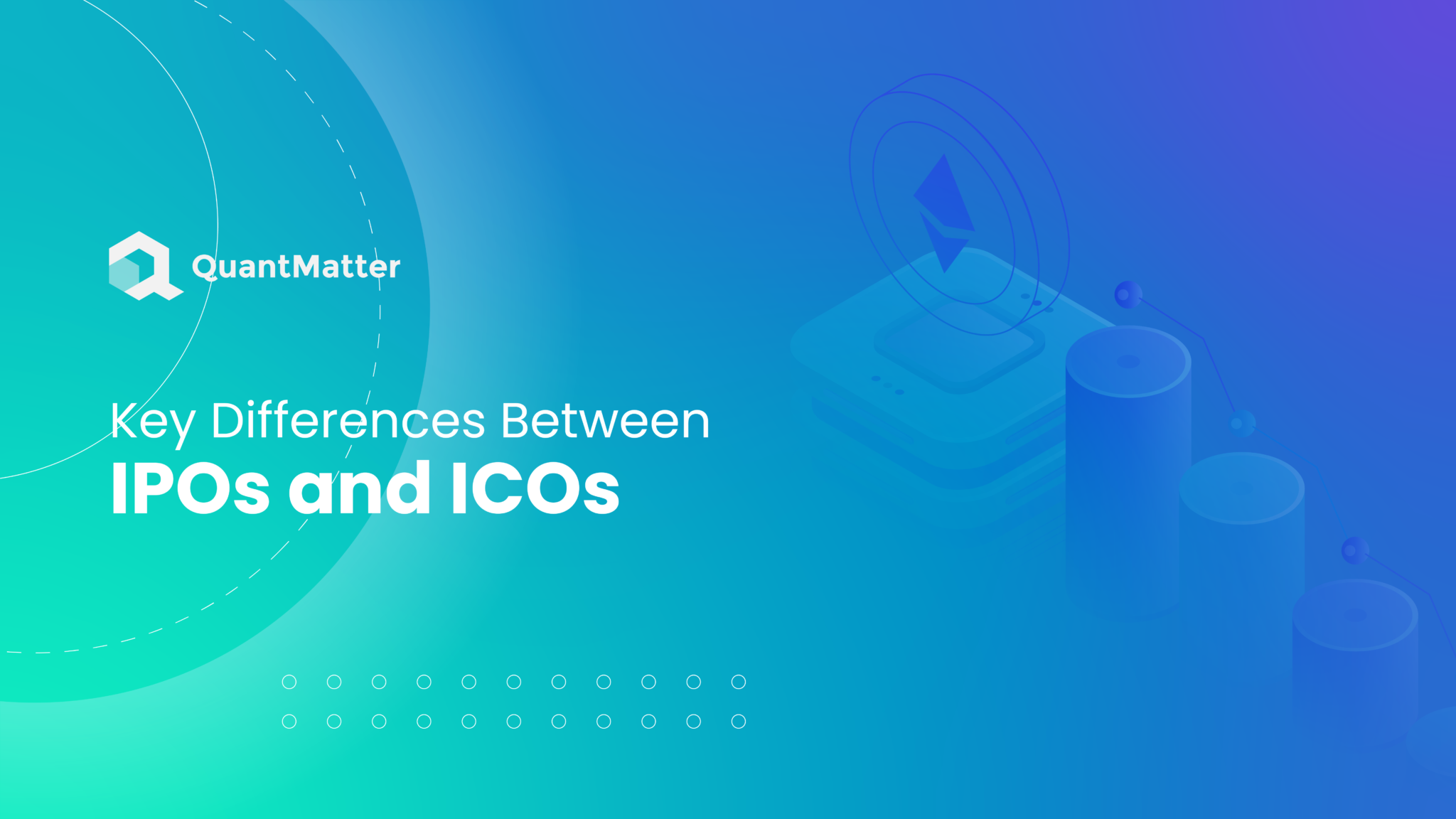
In the world of finance and investment, two terms often come up: Initial Public Offering (IPO) and Initial Coin Offering (ICO). These are popular methods for companies to raise capital, but they operate in very different ways. Understanding the nuances between IPOs and ICOs can help investors make informed decisions and align their investment strategies with their goals.
IPOs have been around for decades and are a well-established method for companies to go public and offer shares to the general public. This process is highly regulated and involves significant scrutiny. On the other hand, ICOs are a relatively new phenomenon that emerged with the rise of cryptocurrencies. They allow companies to raise funds by issuing digital tokens, often with fewer regulations and more flexibility.
This comprehensive comparison will delve into the key aspects of IPOs and ICOs, their advantages and disadvantages, the regulatory environments they operate in, and guidance on choosing the right option for your investment needs.
What is an IPO?

An Initial Public Offering (IPO) is the process through which a private company becomes publicly traded by offering its shares to the public for the first time. This process transforms a private company into a publicly-traded entity listed on a stock exchange. Companies pursue IPOs to raise capital to fund growth, pay off debt, or provide liquidity for shareholders.
The IPO process involves several steps:
- Preparation: The company hires investment banks to underwrite the offering. This step includes preparing a detailed prospectus that outlines the company’s business model, financials, risks, and plans for the raised capital.
- Regulatory Approval: The company must register with the securities regulatory authority, such as the Securities and Exchange Commission (SEC) in the United States. This process ensures that the company provides full and fair disclosure to potential investors.
- Pricing and Launch: The underwriters set the initial price of the shares based on market conditions and investor demand. The shares are then offered to institutional investors and the general public.
IPOs are significant events for companies because they provide access to a larger pool of capital. For investors, IPOs offer an opportunity to invest in a company at the early stages of its public journey. However, IPOs also come with risks, such as market volatility and the potential for overvaluation.
What is an ICO?

An Initial Coin Offering (ICO) is a fundraising method used primarily by startups to bypass the rigorous and regulated capital-raising process required by venture capitalists or banks. In an ICO, a company creates and sells digital tokens or coins to investors in exchange for capital. These tokens often represent a stake in the company, a utility within a product or service, or a future value.
The ICO process typically involves the following steps:
- Whitepaper Creation: The company develops a whitepaper, a detailed document that outlines the project’s goals, technology, team, tokenomics, and the problem it aims to solve. This document is crucial for informing potential investors about the project’s viability.
- Token Development: The company creates digital tokens, usually on an existing blockchain like Ethereum. These tokens are designed to be compatible with the blockchain’s existing infrastructure.
- Marketing and Pre-Sale: The company markets the ICO to attract investors, often through online campaigns, social media, and blockchain forums. A pre-sale phase might occur where tokens are sold at a discount to early backers.
- Public Sale: The main ICO event where tokens are sold to the general public. Investors purchase tokens using cryptocurrencies like Bitcoin or Ethereum.
- Post-ICO: After the ICO, the company focuses on developing the project and delivering on its promises. Tokens may be listed on cryptocurrency exchanges, allowing investors to trade them.
ICOs have gained popularity due to their accessibility and potential for high returns. However, they also carry significant risks, including the potential for scams, lack of regulation, and the volatility of cryptocurrency markets.
Key Differences Between IPOs and ICOs

Understanding the key differences between Initial Public Offerings (IPOs) and Initial Coin Offerings (ICOs) is crucial for investors. While both methods are used to raise capital, they differ significantly in their processes, regulations, and underlying principles.
Regulation
- IPOs: Highly regulated by governmental bodies like the Securities and Exchange Commission (SEC) in the United States. Companies must adhere to strict disclosure requirements and undergo rigorous scrutiny.
- ICOs: Generally less regulated, although this is changing as governments develop new regulations. The lack of regulation has led to a higher incidence of fraud and scams in the ICO space.
Ownership and Control
- IPOs: Investors purchase shares that represent ownership in the company. Shareholders often have voting rights and a say in corporate governance.
- ICOs: Investors buy tokens that may or may not represent ownership. These tokens might grant access to a service, future profits, or simply act as an investment. Voting rights are not typically included.
Also Read: 7 Best Quantitative Analysis News to Check this 2024
Process
- IPOs: Involves hiring investment banks, creating a prospectus, obtaining regulatory approval, and launching the offering on a stock exchange. The process can take several months to years.
- ICOs: Generally faster and less expensive. The process includes creating a whitepaper, developing tokens, marketing the ICO, and selling tokens directly to investors online.
Investor Base
- IPOs: Attract institutional investors, such as mutual funds and pension funds, along with retail investors. The process aims to reach a broad audience through public exchanges.
- ICOs: Primarily attract individual investors and cryptocurrency enthusiasts. Participation is global and can include a more diverse investor base.
Transparency
- IPOs: Require comprehensive disclosure of financial statements, business plans, risks, and other essential information. This transparency is intended to protect investors.
- ICOs: Vary widely in terms of transparency. While reputable ICOs provide detailed whitepapers, others might offer limited information, increasing the risk for investors.
Liquidity
- IPOs: Shares can be traded on stock exchanges, providing liquidity to investors. However, there might be lock-up periods for initial investors.
- ICOs: Tokens can be traded on cryptocurrency exchanges, often providing immediate liquidity. However, the liquidity of tokens can vary greatly depending on market demand and exchange listings.
These differences highlight the distinct nature of IPOs and ICOs, each with its own advantages and risks. Investors should consider these factors when deciding which method aligns best with their investment goals.
Pros and Cons
When considering IPOs and ICOs as investment opportunities, it’s important to weigh their respective advantages and disadvantages. This comparison will help investors make informed decisions based on their risk tolerance, investment goals, and market outlook.
Pros and Cons of IPOs
Pros:
- Regulatory Oversight: IPOs are heavily regulated, providing a level of security and transparency for investors. The rigorous approval process ensures that only credible companies go public.
- Investor Rights: Shareholders gain ownership stakes in the company, often with voting rights and dividends, giving them a voice in corporate decisions.
- Liquidity: Shares of publicly traded companies can be easily bought and sold on stock exchanges, providing liquidity for investors.
- Access to Information: Public companies are required to disclose financial statements and other key information, helping investors make informed decisions.
Cons:
- High Costs: The IPO process is expensive, involving fees for underwriters, legal advisors, and regulatory compliance.
- Time-Consuming: Preparing for an IPO can take several months to years, requiring significant resources and management focus.
- Market Volatility: Share prices can be highly volatile, influenced by market conditions, investor sentiment, and company performance.
- Dilution of Control: Founders and early investors may experience a dilution of control as new shareholders gain influence.
Pros and Cons of ICOs
Pros:
- Accessibility: ICOs provide a global platform for raising capital, allowing anyone with internet access to participate.
- Lower Barriers to Entry: The process is generally faster and less costly than an IPO, making it accessible to startups and smaller companies.
- Innovation and Flexibility: ICOs enable innovative business models and the creation of new digital ecosystems, fostering technological advancement.
- Potential for High Returns: Early investors in successful ICOs can see significant returns on their investment.
Cons:
- Regulatory Risks: The lack of regulation in many jurisdictions increases the risk of fraud and scams. Regulatory environments are also rapidly changing, adding uncertainty.
- Volatility: Cryptocurrencies and tokens are highly volatile, with prices subject to extreme fluctuations.
- Lack of Investor Protections: Unlike IPOs, ICOs do not typically offer the same level of investor rights and protections, such as voting rights or dividends.
- Transparency Issues: The quality and detail of whitepapers vary, and some projects may provide insufficient information, making it harder for investors to assess their viability.
By understanding the pros and cons of IPOs and ICOs, investors can better navigate these investment opportunities and choose the option that aligns with their financial goals and risk tolerance.
Also Read: 10 Best Undergraduate Degree Courses to Become a Quant
Which is Right for You?
Choosing between an IPO and an ICO depends on your investment goals, risk tolerance, and understanding of the financial markets. Each method has its own set of advantages and challenges, making it suitable for different types of investors.
Considerations for IPOs
- Lower Risk: IPOs are generally considered lower risk compared to ICOs due to regulatory oversight and transparency. The stringent disclosure requirements provide investors with detailed information about the company’s financial health and business model.
- Market Volatility: While IPOs are subject to market volatility, the established nature of the public markets can offer some stability.
- Investment Goals: Long-term Growth: IPOs are typically suited for investors looking for long-term growth. Investing in a company during its IPO can offer substantial returns as the company grows and matures.
- Ownership and Dividends: Investors seeking ownership stakes and potential dividends may prefer IPOs. Shareholders often have voting rights and may receive dividends based on the company’s profitability.
- Comprehensive Information: The regulatory requirements for IPOs ensure that investors have access to a wealth of information, aiding in thorough due diligence and informed decision-making.
Considerations for ICOs
- Higher Risk: ICOs are inherently riskier due to the lack of regulatory oversight and the volatile nature of the cryptocurrency market. The potential for high returns is accompanied by a significant risk of loss.
- Scams and Fraud: The relatively unregulated environment increases the risk of scams and fraudulent projects. Investors must exercise caution and conduct extensive research.
- Investment Goals: Speculative Gains: ICOs may appeal to investors looking for speculative gains and willing to accept higher risks. Successful ICOs can yield substantial returns, but they are also highly volatile.
- Innovation and Early Adoption: Investors interested in supporting innovative technologies and early-stage projects might find ICOs attractive. Investing in ICOs allows participation in cutting-edge developments in the blockchain and cryptocurrency space.
- Limited Information: The quality and transparency of information available for ICOs can vary widely. Investors need to scrutinize whitepapers, team credentials, project feasibility, and community feedback to assess the viability of an ICO.
Personal Investment Strategy
- Diversification: A balanced investment portfolio might include both IPOs and ICOs to spread risk and capitalize on different opportunities. Diversification can mitigate potential losses and enhance overall returns.
- Knowledge and Expertise: Investors with a deep understanding of the cryptocurrency market and blockchain technology may feel more comfortable navigating ICOs. Conversely, those with a background in traditional finance might prefer the familiarity and stability of IPOs.
- Financial Goals: Define your financial goals, such as short-term gains, long-term growth, or supporting innovative technologies. Align your investment choices with these goals to create a coherent strategy.
Choosing between an IPO and an ICO depends on your individual circumstances, including risk tolerance, investment goals, and market knowledge. By carefully considering these factors, you can make an informed decision that aligns with your financial objectives.
Conclusion
In the ever-evolving landscape of investment opportunities, both Initial Public Offerings (IPOs) and Initial Coin Offerings (ICOs) offer distinct pathways for companies to raise capital and for investors to grow their portfolios. IPOs provide a regulated and transparent environment, making them a relatively lower-risk investment compared to ICOs. They are ideal for those seeking stable, long-term growth and ownership stakes in established companies. The rigorous regulatory oversight ensures a level of security, offering investors substantial information to conduct thorough due diligence.
On the other hand, ICOs represent a modern, innovative approach to fundraising, driven by the rapid advancement of blockchain technology. They offer opportunities for early investment in cutting-edge projects with potentially high returns. However, the lack of comprehensive regulation and the volatility of the cryptocurrency market increase the associated risks. Investors must be diligent, conducting extensive research to avoid scams and fraudulent projects. ICOs are suited for those with a higher risk tolerance and a keen interest in emerging technologies.
When choosing between an IPO and an ICO, consider your investment strategy, financial objectives, and risk appetite. Diversifying your portfolio by including both IPOs and ICOs can help balance risk and reward, capitalizing on the strengths of each method. Staying informed about regulatory changes and market trends will enable you to navigate these investment opportunities effectively, ensuring that your choices align with your financial goals and contribute to a robust and diversified portfolio.
Disclaimer: The information provided by Quant Matter in this article is intended for general informational purposes and does not reflect the company’s opinion. It is not intended as investment advice or a recommendation. Readers are strongly advised to conduct their own thorough research and consult with a qualified financial advisor before making any financial decisions.

I'm Carina, a passionate crypto trader, analyst, and enthusiast. With years of experience in the thrilling world of cryptocurrency, I have dedicated my time to understanding the complexities and trends of this ever-evolving industry.
Through my expertise, I strive to empower individuals with the knowledge and tools they need to navigate the exciting realm of digital assets. Whether you're a seasoned investor or a curious beginner, I'm here to share valuable insights, practical tips, and comprehensive analyses to help you make informed decisions in the crypto space.
- Carinahttps://quantmatter.com/author/carina/
- Carinahttps://quantmatter.com/author/carina/
- Carinahttps://quantmatter.com/author/carina/
- Carinahttps://quantmatter.com/author/carina/
